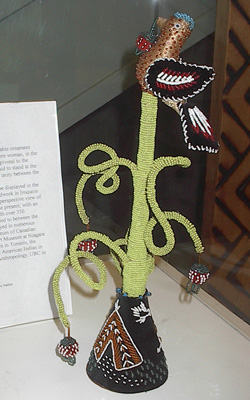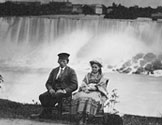 Long before 1808 when Niagara County pioneers formally incorporated into today’s county boundaries, other people called this land their own and had adopted a constitution that included such basics as the right to declare war, make treaties and admit new members. About forty years before the arrival of Christopher Columbus on American soil, this group of people established the first confederation to work together for the peace and well-being of its members. By the mid- 1450s, the Iroquois Confederacy- the Seneca, Cayuga, Onondaga, Oneida, Mohawk, and later the Tuscarora, filled much of what is now New York State. The Seneca’s, who inhabited Western New York, were named “Guardians of the Western Door,” and were given the responsibility to protect the western end of the Confederacy from hostile attacks.
Long before 1808 when Niagara County pioneers formally incorporated into today’s county boundaries, other people called this land their own and had adopted a constitution that included such basics as the right to declare war, make treaties and admit new members. About forty years before the arrival of Christopher Columbus on American soil, this group of people established the first confederation to work together for the peace and well-being of its members. By the mid- 1450s, the Iroquois Confederacy- the Seneca, Cayuga, Onondaga, Oneida, Mohawk, and later the Tuscarora, filled much of what is now New York State. The Seneca’s, who inhabited Western New York, were named “Guardians of the Western Door,” and were given the responsibility to protect the western end of the Confederacy from hostile attacks.
Eventually, the Iroquois Confederacy adopted the Great Law of Words that would later become the basis for the American Bill of Rights that guarantees citizens all of the basic freedoms that we hold so dear. The Iroquois people created this first written constitution in the New World and symbolized it with a pine tree known as the Great Tree of Peace. A bald eagle was symbolically perched atop the tree to remind the nation to keep a keen eye into the distance for any sign of approaching danger. This symbol, too, would later be borrowed by the European settlers as they declared their own independence and confederation, three hundred years later.
Douglas Farley, Director
Erie Canal Discover Center
24 Church St.
Lockport NY 14094
716.439.0431
CanalDiscovery@aol.com
www.NiagaraHistory.org






